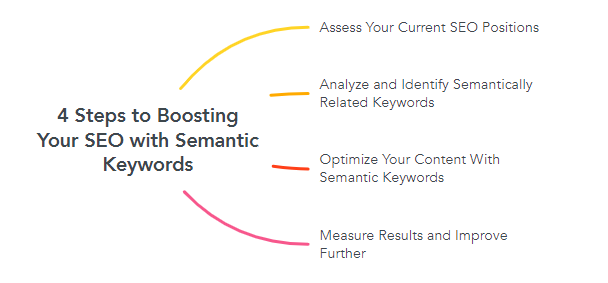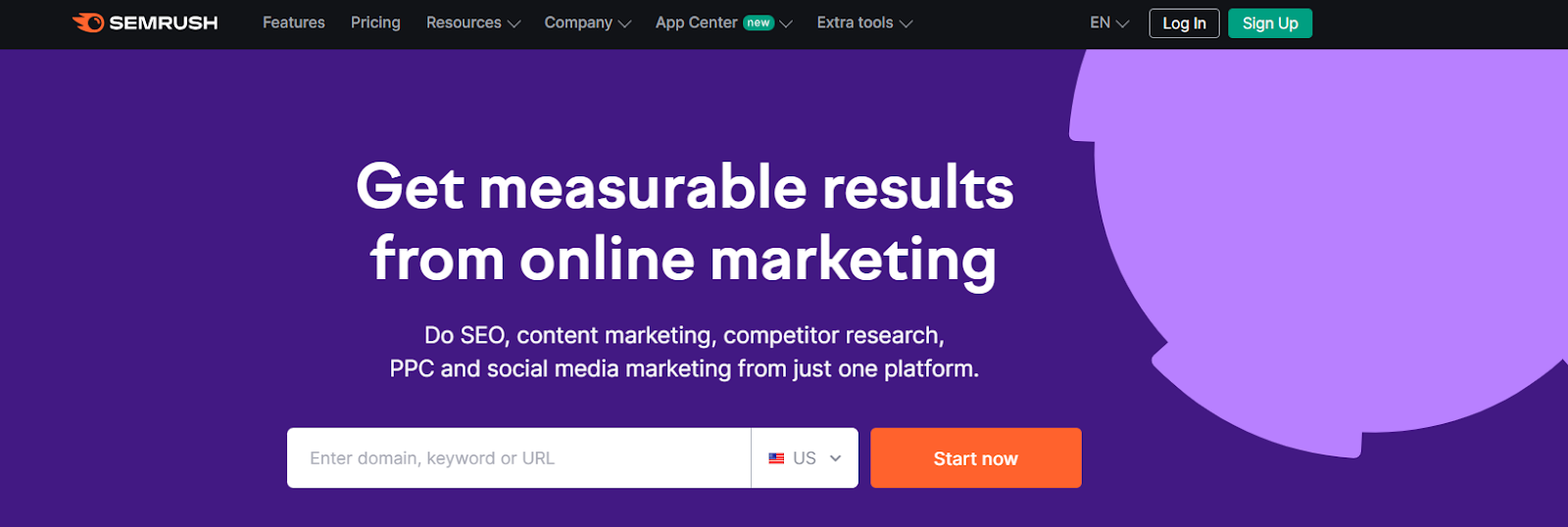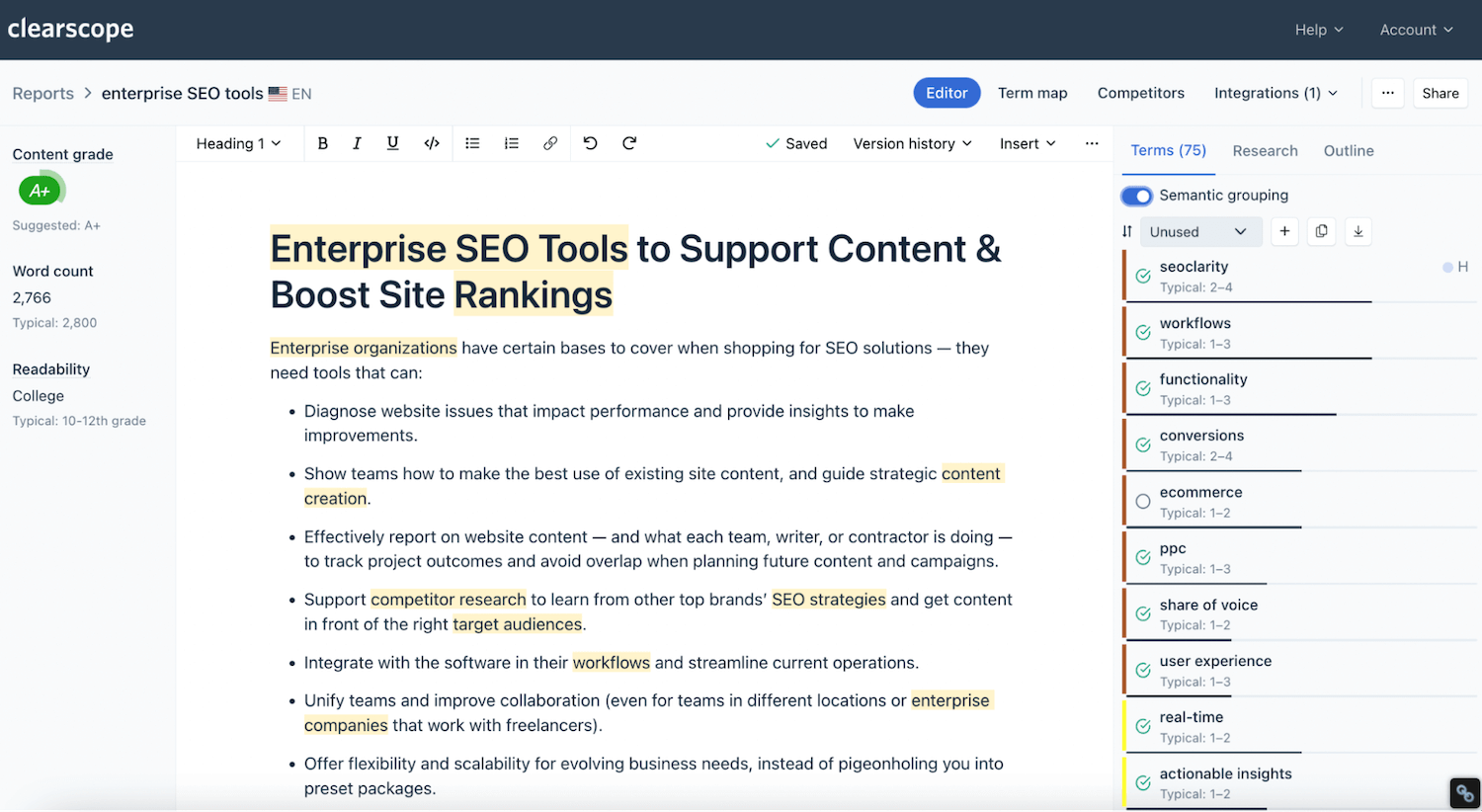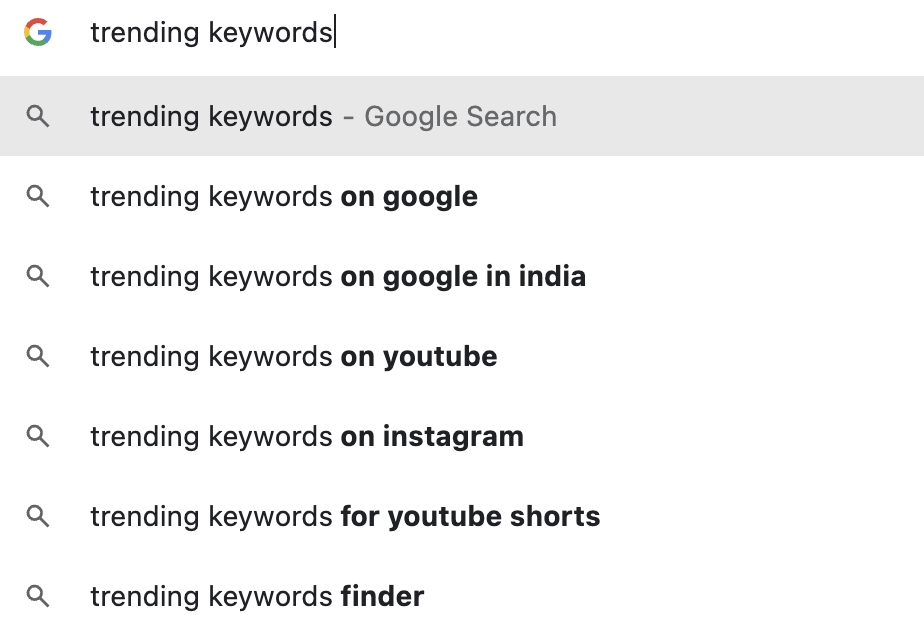Understanding search intent is crucial for content creators and marketers because it allows them to tailor their content strategies to meet the user's needs effectively. For instance, if a keyword is identified with a strong informational intent, the content created around that keyword should aim to educate and provide thorough information on the topic.
How Can You Identify if Your Keywords are Semantically Related?
Identifying whether your keywords are semantically related involves understanding the contextual and conceptual relationships between words and phrases. This process is integral to crafting content that aligns with semantic search principles, ensuring that your content resonates with the intent and needs of your target audience. Here’s how you can identify if your keywords are semantically related:
Use Semantic Keyword Research Tools: Many SEO tools now offer features that help identify semantically related keywords. These tools analyze content across the web to find terms that frequently occur in the same context as your primary keyword. They can provide insights into related topics, questions, and phrases that can enrich your content strategy.
Analyze Search Engine Results Pages (SERPs): A simple yet effective way to discover semantically related keywords is to examine the SERPs for your primary keyword. Look for patterns in the titles, meta descriptions, and content of top-ranking pages. Google’s "People also ask" section and related searches at the bottom of the SERP are goldmines for finding related queries and topics.
Consider User Intent and Queries: Reflect on the various ways users might search for information related to your primary keyword. This involves thinking beyond synonyms to consider different aspects of the topic. For example, if your primary keyword is “credit cards,” semantically related terms might include “credit score requirements,” “credit card application process,” and “interest rates,” as these are topics users are likely interested in when researching credit cards.
Utilize Latent Semantic Indexing (LSI) Principles: While LSI keywords are conceptually related terms, they're not necessarily synonyms. They are terms that often co-occur within the same content, helping search engines understand the content's context better. Incorporating LSI keywords can boost content relevance and help it rank for a broader range of queries.
Semantic Keyword Grouping: Group your keywords based on shared themes or topics. This approach helps in creating comprehensive content that addresses multiple facets of a subject. For instance, for a financial website, grouping keywords around "savings accounts," "fixed deposits," and "interest rates" can help cover the broader topic of saving money effectively.
4 Steps to Boosting Your SEO with Semantic Keywords

Leveraging semantic keywords aligns with the evolving algorithms of search engines like Google, which prioritize understanding the intent and context behind user queries. Below is a strategic four-step process to amplify your SEO efforts using semantic keywords.
Step 1: Assess Your Current SEO Positions
Begin with a thorough audit of your current SEO standings to pinpoint where you already excel and identify areas ripe for improvement. Utilize analytics tools to track your rankings for core keywords and analyze the traffic they bring to your site. This initial assessment offers a clear baseline against which to measure the impact of integrating semantic keywords into your SEO strategy.
Monitor Your Rankings: Use tools to track how your pages rank for targeted keywords, including variations and long-tail phrases.
Evaluate Your Content's Performance: Assess which content performs best in terms of engagement and SERP positioning. Identify patterns or commonalities in topics or keyword usage that may contribute to success.
Understand the Competitive Landscape: Analyze your competitors' keyword strategies to understand the semantic relationships between the keywords they target and the content they produce.
Step 2: Analyze and Identify Semantically Related Keywords
Dive into semantic keyword research to expand your content's reach and relevance. This step involves identifying terms and phrases that are conceptually related to your primary keywords but may not be direct synonyms. These semantically related keywords can enrich your content, making it more comprehensive and aligning it with the varied ways users search for information.
Leverage Semantic Keyword Tools: Utilize advanced SEO tools that offer semantic keyword research capabilities. These tools can suggest related topics, questions, and phrases based on your primary keywords.
Analyze SERPs and Related Searches: Google's SERPs are a treasure trove of semantic keyword insights. Examine the "People also ask" section and related searches for additional context around your primary keywords.
Study User Intent and Queries: Reflect on the intent behind user searches related to your keywords. This can reveal additional semantically related terms that address the same user needs from different angles.
Group Keywords Thematically: Organize your keywords into thematic groups that reflect different aspects or subtopics of your main content focus. This helps in creating more targeted and comprehensive content.
Engage in Competitor Analysis: Analyze your competitors' content to identify semantically related keywords they might be targeting. This can provide insights into gaps in your own content strategy or reveal new opportunities for differentiation.
Step 3: Optimize Your Content With Semantic Keywords
Optimizing your content with semantic keywords is a pivotal step in enhancing your SEO strategy, ensuring that your content is not only rich and informative but also aligned with how search engines understand and rank web pages. Here’s how to effectively incorporate semantic keywords into your content:
Integrate Keywords Naturally: Your content should flow naturally, with semantic keywords woven seamlessly throughout the text. This integration helps maintain the quality and readability of your content, making it engaging for users while still being optimized for search engines. For instance, if "credit cards" is your primary keyword, include semantically related terms such as "credit score," "financial planning," and "interest rates" in a way that adds value to the topic and enhances understanding.
Use Keywords Across Various Elements: Beyond the body text, include semantic keywords in strategic locations such as the title tag, meta descriptions, headers, and URL if possible. This holistic approach signals to search engines the comprehensive coverage of your content on the topic, improving its relevance and authority.
Enhance Content Structure: Utilize semantic keyword grouping to structure your content into clear, logical sections or headings. This not only aids readability for users but also helps search engines crawl and index your content more effectively, understanding the breadth and depth of the information provided.
Add Supporting Content Types: Incorporate a variety of content types such as images, videos, infographics, and tables into your content, using semantic keywords in alt tags, captions, and descriptions. This diversification not only enriches the user experience but also caters to different search intents, broadening the reach of your content in search results.
Step 4: Measure Results and Improve Further
The final step involves measuring the impact of integrating semantic keywords into your content and iterating based on the data gathered. Continuous monitoring and analysis allow you to refine your strategy, ensuring long-term SEO success.
Track Keyword Rankings: Regularly monitor the rankings of both your primary and semantic keywords to gauge how well your content is performing in SERPs. Note any positive shifts or drops in rankings to understand the effectiveness of your optimization efforts.
Analyze Traffic and Engagement Metrics: Use analytics tools to measure the traffic, bounce rate, average time on page, and conversion rates associated with your optimized content. This data provides insights into how well your content meets user intent and engagement, guiding further optimization.
Conduct Competitor Analysis: Keep an eye on your competitors’ strategies for using semantic keywords and content optimization. This ongoing analysis can reveal new opportunities for improvement or differentiation in your own content strategy.
Solicit User Feedback: Gather feedback from your audience through surveys, comments, or social media interactions. Direct user insights can inform adjustments in your content to better meet their needs and preferences.
Iterate and Update Content: Based on the data collected and insights gained, continually refine and update your content. Re-optimizing with new semantic keywords, adjusting content structure, and refreshing outdated information ensure that your content remains relevant and authoritative over time.
How to Find Semantic Keywords?

Finding semantic keywords is a crucial step in creating content that not only ranks well in search engine results pages (SERPs) but also meets the informational needs of your audience. Semantic keywords help bridge the gap between user intent and content, allowing for a more nuanced approach to SEO that goes beyond traditional keyword matching. Here's how to uncover these valuable semantic keywords for your content strategy.
Keyword Research Tools
Leveraging keyword research tools is the first and most efficient step in identifying semantic keywords related to your primary keyword. These tools are designed to analyze vast amounts of web content and search data to suggest keywords that are contextually related to your main term.
Advanced SEO Tools: Platforms like SEMrush, Ahrefs, and Moz offer keyword research features that provide insights into related keywords, question phrases, and topic clusters. By entering your primary keyword into these tools, you'll receive a list of suggested semantic keywords that share a conceptual relationship with your main term. For example, entering “credit cards” might reveal related terms such as “credit score,” “annual fees,” and “rewards programs.”

Content Optimization Tools: Tools specifically geared towards content optimization, such as Clearscope or MarketMuse, analyze top-performing content in your niche to recommend semantically related terms. These tools help ensure your content covers a topic comprehensively by including relevant terms and concepts that competitors are also mentioning.

Google’s Search Suggestions
Google itself is a treasure trove of semantic keyword insights, thanks to features designed to enhance the search experience for users. These features can be used creatively to identify semantic keywords.
Autocomplete: Start typing your primary keyword into Google’s search bar, and you’ll notice a dropdown list of suggested search queries. These are based on common searches related to your initial term and can provide immediate insights into semantically related keywords. For instance, typing “credit cards for” might suggest “credit cards for good credit,” “credit cards for travel,” etc.

People Also Ask (PAA) Boxes
Google's "People Also Ask" (PAA) feature is an invaluable resource for uncovering semantic keywords and understanding user intent. It presents a series of questions related to the user's initial search query, offering insights into related topics and queries that real users are searching for. Each question in the PAA box can be clicked to reveal an answer, often pulled from a web page that Google considers authoritative on the subject. For SEO professionals and content creators, PAA boxes are a goldmine for identifying semantically related keywords and understanding the breadth of information users seek around a topic.
How to Leverage PAA for Semantic Keyword Research?
Expand Your Keyword List: Each question in the PAA box represents a query that users have actually typed into Google. Incorporating these questions and their variations into your content strategy can help you cover a broader range of topics and answer real user questions, enhancing the relevance and authority of your content.

Identify User Concerns and Needs: The nature of the questions in the PAA box can give you insights into what users are most concerned about regarding a particular topic. For example, if you're targeting "credit cards" as your primary keyword, PAA questions might include "How to apply for a credit card?" or "What is the best credit card for earning miles?" These queries reveal user interests and pain points, guiding you to create content that addresses these areas.
Enhance Content Depth and Quality: By answering questions from the PAA box within your content, you provide value to your audience and increase the likelihood of your content being featured in PAA boxes for related queries. This not only drives more traffic to your site but also positions your brand as a knowledgeable authority in your niche.
User Intent Analysis
Understanding user intent is the cornerstone of effective SEO and content strategy. It involves deciphering the reason behind a user's search query—whether they're looking to buy, learn, find a specific website, or solve a problem. Analyzing user intent allows you to tailor your content to meet users' needs more effectively, improving your content's visibility and engagement.
How to Conduct User Intent Analysis?
Categorize Intent: Start by categorizing the intent behind search queries related to your primary keyword. Generally, intents fall into informational, navigational, transactional, or commercial investigation categories. Recognizing the intent category can guide how you structure content and what information to include.
Semantic Keyword Grouping: Group semantically related keywords by intent. This helps in creating targeted content that speaks directly to the user's stage in the customer journey. For instance, keywords with transactional intent related to "credit cards" might include "apply for credit card online," requiring different content than informational queries like "how do credit cards work."
Analyze SERPs for Intent Clues: The type of content that ranks well for a specific query provides clues about the intent behind that query. If product pages rank highly, the intent is likely transactional. If how-to articles or guides dominate, the intent is probably informational. This analysis helps in crafting content that matches the intent, increasing its chances of ranking well.
Utilize Tools for Deep Insights: SEO tools that offer intent analysis features can automate and deepen your understanding of user intent. These tools analyze large sets of data to identify patterns and trends in how users search for topics related to your primary keywords, offering actionable insights for content optimization.
Conclusion
Semantic keywords, going beyond mere synonyms or related terms, embody the essence of a topic, offering a broader, more contextual understanding of content. They bridge the gap between semantic search and keyword search, enabling content creators to speak the language of modern search engines like Google, which prioritize understanding and relevance over keyword density. This evolution towards semantic search demands a strategic approach to semantic keyword grouping and research, ensuring content is rich, informative, and, most importantly, aligned with user intent.
The utilization of semantic keyword tools and methodologies such as latent semantic indexing (LSI) has become instrumental in identifying the semantically related terms that enrich content and enhance its visibility and relevance. These tools and practices offer a pathway to understanding how concepts are interlinked, providing a blueprint for creating content that resonates with both users and search engines.
Furthermore, the importance of Google's search suggestions and features like People Also Ask (PAA) boxes cannot be overstated. They serve as direct channels to the queries and concerns of users, offering real-time insights into the ever-evolving landscape of search queries and user interests. These features enable content creators to tailor their strategies to meet the specific needs of their audience, fostering a deeper connection and engagement.
The comprehensive user intent analysis further emphasizes the need to delve into the why behind search queries, moving beyond the what to create content that genuinely addresses user needs and queries. It's about crafting content that doesn't just aim to rank well but to provide value, information, and solutions to users.
Frequently Asked Questions (FAQs)
In this section, we address some common questions and concerns about semantic keywords.
How do AI editing tools actually understand and improve the semantic context of content?
AI editing tools use natural language processing (NLP) and machine learning to analyze text, understanding the semantic relationships between words and phrases, and suggest improvements based on context and intent, enhancing content relevance and user engagement.
Can AI content editing tools replace human editors completely?
No, AI content editing tools are designed to assist human editors by automating repetitive tasks and suggesting improvements, but they cannot replace the nuanced understanding, creative input, and strategic judgment that human editors provide.
How frequently should AI-generated content be updated to maintain its relevance and accuracy?
AI-generated content should be reviewed and updated regularly, ideally every few months, to ensure it remains accurate, relevant, and aligned with the latest industry trends, search engine algorithms, and audience preferences.

